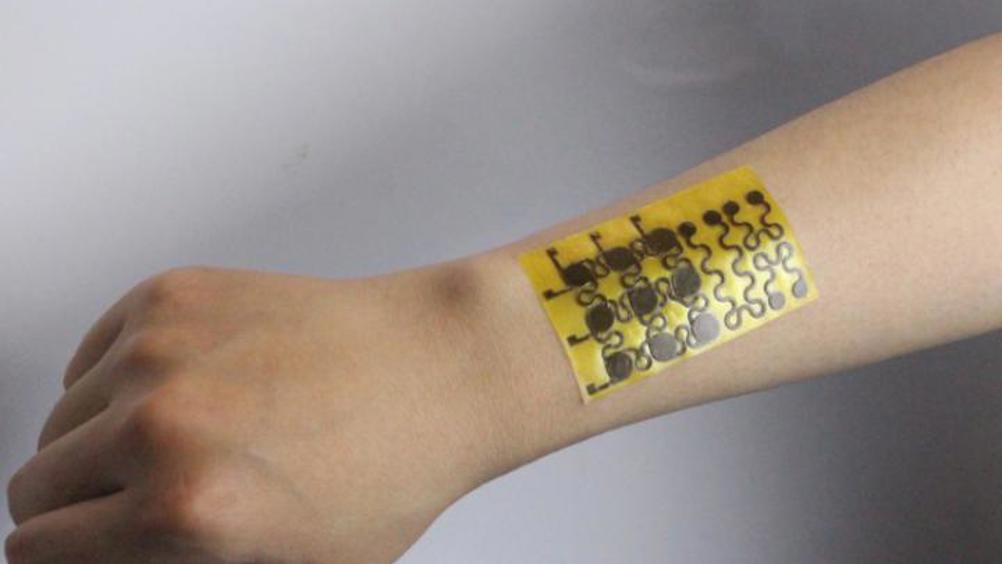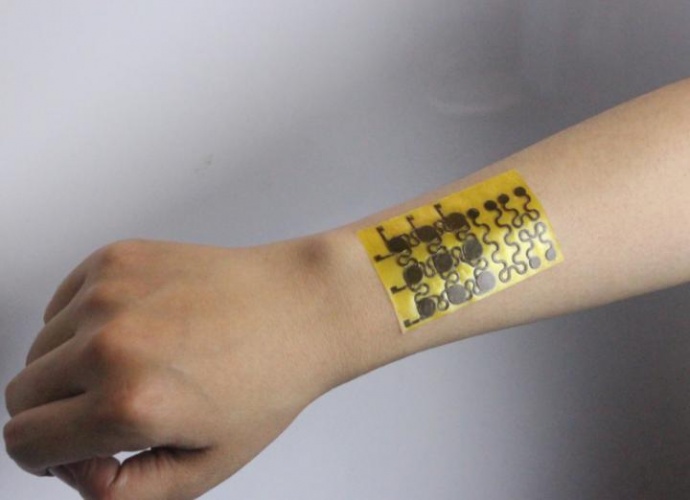Recyclable electronic skin has robotics and biomedical potential
Researchers at the University of Colorado Boulder have developed a new type of electronic skin that is malleable and recyclable, and which can self-heal after sustaining damage.


(Credit: Jianliang Xiao / University of Colorado Boulder)
The electronic skin - or e-skin - features a new type of covalently bonded dynamic network polymer, known as polyimine. By doping this material with silver nanoparticles, the CU Boulder team gave the material better mechanical strength, chemical stability and electrical conductivity. Embedded sensors in the e-skin measure pressure, temperature, humidity and air flow, while its flexibility under moderate heat and pressure allow it to be wrapped around human or robotic limbs.
To repair the e-skin after it has suffered mechanical damage, a rehealing agent consisting of three compounds in ethanol is applied with heat pressing. Because of the reversible bond formation of the material, the electronic skin can also be fully recycled by soaking in a solution. This encourages the polymers to degrade into oligomers and monomers that are soluble in ethanol, with the silver nanoparticles sinking to the bottom of the solution. The work appears in Science Advances.
Register now to continue reading
Thanks for visiting The Engineer. You’ve now reached your monthly limit of news stories. Register for free to unlock unlimited access to all of our news coverage, as well as premium content including opinion, in-depth features and special reports.
Benefits of registering
-
In-depth insights and coverage of key emerging trends
-
Unrestricted access to special reports throughout the year
-
Daily technology news delivered straight to your inbox











Comment: The UK is closer to deindustrialisation than reindustrialisation
"..have been years in the making" and are embedded in the actors - thus making it difficult for UK industry to move on and develop and apply...